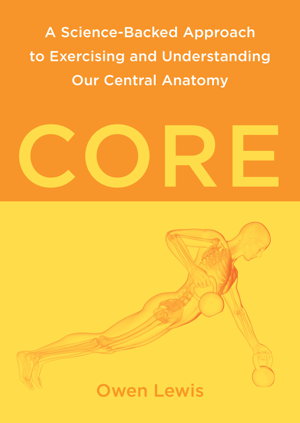| Sun | 10am – 5pm |
| Mon | 9am – 5:30pm |
| Tue | 9am – 5:30pm |
| Wed | 9am – 5:30pm |
| Thu | 9am – 5:30pm |
| Fri | 9am – 7pm |
| Sat | 9am – 5pm |
Ask our staff anything about our shop or products, or share your feedback.

PublishedNorth Atlantic, July 2024 |
ISBN9798889840718 |
FormatSoftcover, 190 pages |
Dimensions24cm × 16.9cm × 0.8cm |
A holistic, in-depth guide to understanding 'core' strength for therapists, movement professionals, and serious enthusiasts seeking advanced insights into functional training for mental and physical health
A holistic, in-depth guide to understanding 'core' strength for therapists, movement professionals, and serious enthusiasts seeking advanced insights into functional training for mental and physical health
Health magazines, gym-class instructors, and YouTube fitness experts frequently speak of the importance of a strong "core," the muscles at our body's center that provide stability and support our movement. We know that improved core function can reduce symptoms of low back pain and pelvic pain, incontinence, and breathing issues. But while the core may be well-known, it is still poorly understood- there is no universally agreed-upon definition of the core or the muscles it comprises.
Core adopts a holistic yet practical approach to demystifying the core, considering this crucial muscle group for its physical importance to bodily movement as well as our emotional and spiritual center. Physical therapist Owen Lewis digs into a wide range of metaphors and frameworks used to understand the core-from the Japanese concept of hara, a central storehouse of energy, to the set of specific muscles referenced in fitness studios everywhere.
While physical therapy and core-exercise regimens tend to emphasize strength building and stable posture, Lewis argues for an approach that is also flexible, fluid, and adaptable- the same exercises may not be appropriate for every person, and may need to be changed up over time. In some cases, a "weak" core may be the result of muscles that are overworked and stressed, and "good" posture may create more pain than it prevents.
Lewis clearly explains how the core works to manage and transfer the force of movement through the center of the body, building on principles of biotensegrity (how the tension and compression of different muscles creates a balanced structure which distributes stress and strain). The final chapters of the book provide a range of useful, functional training exercises suitable for lay readers but especially helpful as examples for therapists and trainers to use with clients.
Lewis emphasizes functional training and underlying principles over a static list of exercises, providing the groundwork for tailored, individual training to improve core function. Supplemented throughout with color photos and a diverse range of models, Core makes it easy to understand the anatomy of this crucial region of the body, as well as key principles for more effective and safe exercises and training regimens.

